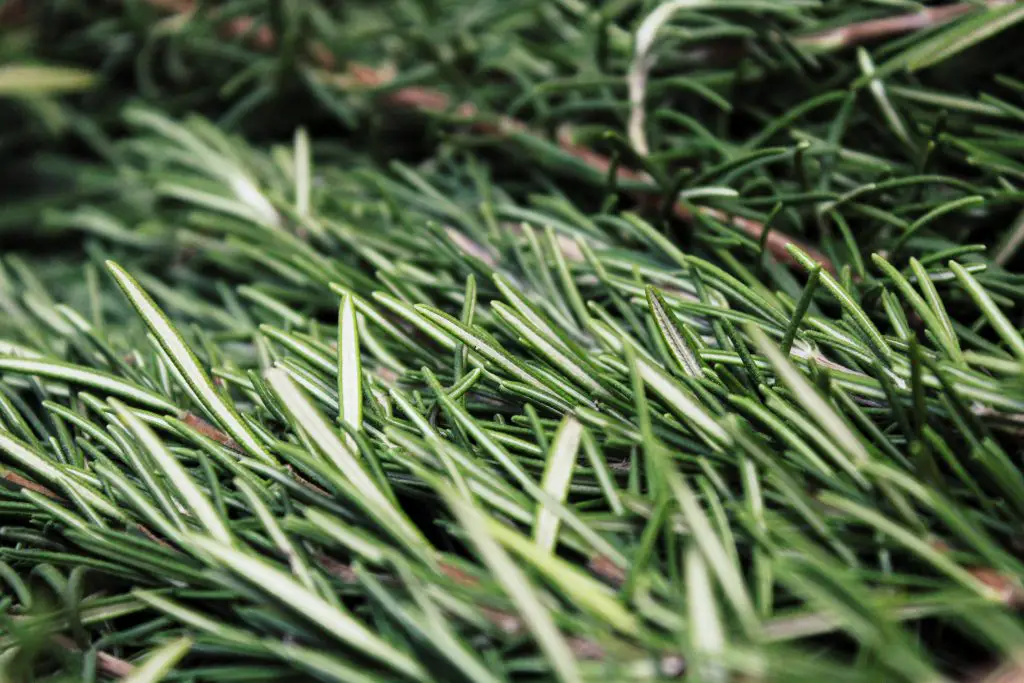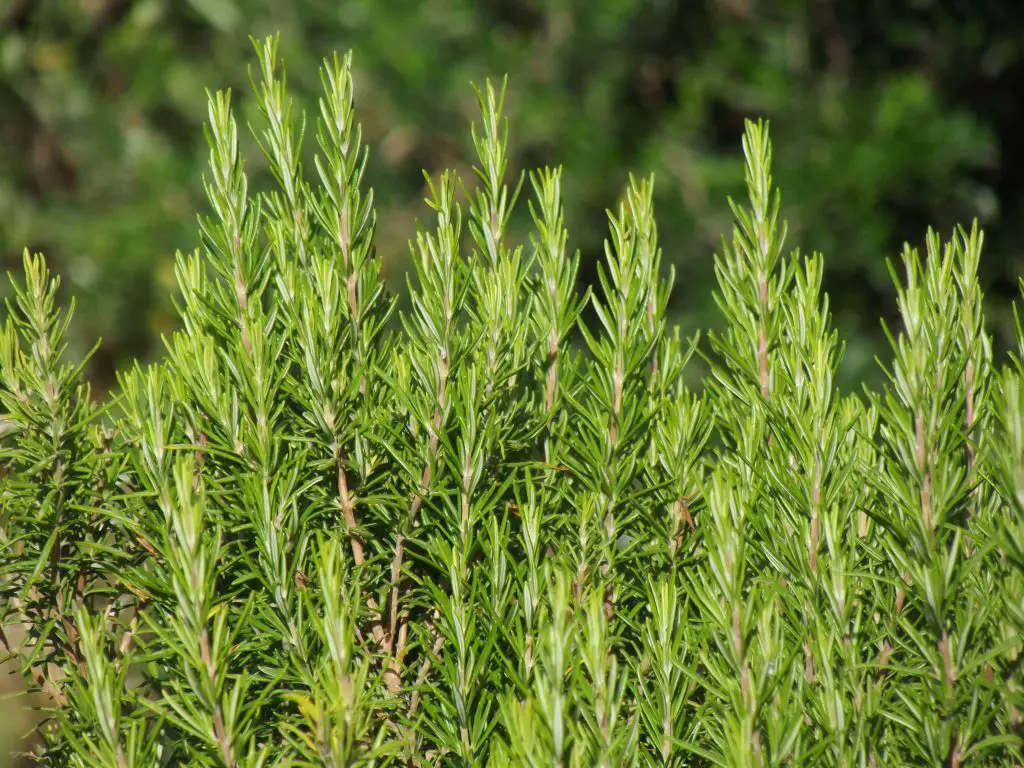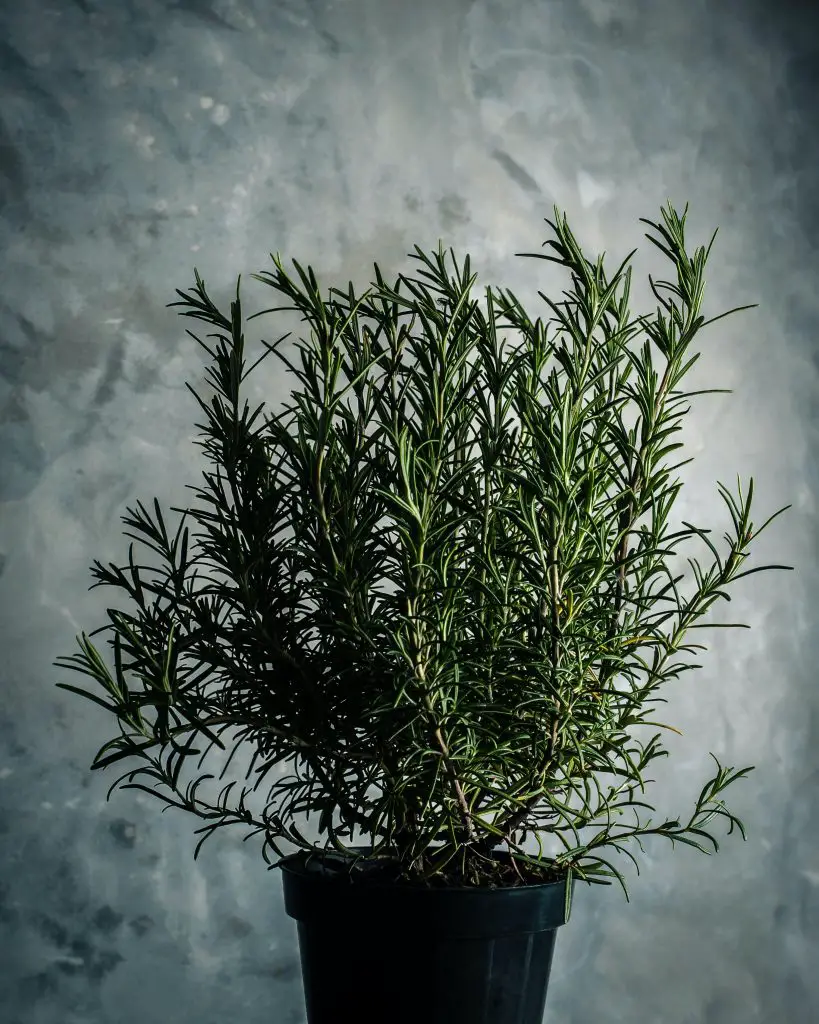Can You Rosemary From Grocery Store Herbs? Is It Possible? Rosemary is one of the most popular herbs that is widely used in a range of dishes but is most suited to roast lamb and potato dishes. So when you go to the supermarket to buy Rosemary can you also take the leftover herbs and grow a plant from them?
If you purchase Rosemary from the grocery store you can use it to successfully propagate your own plant. However, to give yourself the best possible chance of being able to produce your own rosemary plant it is best to select the healthiest herbs you can find and then put the cuttings into water as soon as you get home to reduce the chances of the cutting drying out.
The reason for this is that the chances of success will hinge upon how long the cutting has been sitting in the grocery store and how much moisture it has lost. The chances of success are generally improved if you attempt this in spring or autumn when the weather is a little bit cooler.

How To Grow Rosemary From Cuttings
As mentioned above it is best to select sprigs of rosemary from the grocery store shelves that appear fresh and green as this will definitely increase your chances of success. Additionally, the sprigs you select should ideally be somewhere between 4 to 6 inches long or even longer ideally.
The reason for this is that it will give you more options when you are cutting up the sprig of rosemary. To create cuttings it is ideal to be able to remove the lower section of the sprig leaving a cutting that is at least a few inches long as the lower section of the cutting is the area that will have most likely dried it out.
Once the cutting has been cut to size the next step is to remove the leaves from the bottom part of the cutting. This can be done quickly and easily by running your fingers down the stem of the cutting.
The next step is to place the cutting into the growing medium which can either be In water or soil as either one will work. If you are placing the cutting in water it is best to fill the container to a depth that ensures that the foliage remains dry as it will rot if it remains immersed in water.
The advantage of using water over soil is that you can clearly see the formation of the white roots over time however the plant will eventually have to make its way into soil.
If you are using soil as the growing medium it is best to use a specific seed raising mixture rather than in soil from the garden or potting mixture. The reason for this is that a seed-raising mix is light and fluffy and has a fine texture with excellent moisture retention properties.
Fill the pot with seed-raising mix and firm it down. Place the prepared Rosemary cuttings around the outside of the pot. To increase the chances of success it is recommended that you use a planting hormone or honey on the base of the cutting as this will increase your chances of success.
If you are purchasing a rooting hormone it is recommended that you purchase a liquid one rather than a powder as studies have shown that liquid versions of the same rooting hormone perform better. To read more about this click here.

Once the plant is in the soil the next step is to water the plant I place it on a window sill that is warm and ideally gets the morning sun rather than the hot afternoon sun.
Carefully monitor the progress of the seedling and ensure that the cutting remains moist at all times. If you are growing the cutting in water it is still important to check the water regularly to ensure that it does not evaporate or develop mold and fungi. If this occurs change the water over.
After a few weeks the plant will begin to produce roots which can easily be seen in cuttings placed in water as they will begin to produce white spindly roots. If you are growing the cutting in soil look for signs of top growth development which will indicate that the root system is beginning to establish.
In the case of plants that are grown in water the ideal time to transfer the plant from water into soil is when you begin to see a mass of roots at the base of the container. When this occurs transfer the plant to a pot being careful to minimize root disturbance.
This can be done by partially filling the pot with soil and then placing the plant above the soil and then gently spooning in additional soil until the root system is fully covered. Gently tap the pot to settle the soil around the roots but do not press down on the soil to avoid damaging the roots.
In the case of plants being grown in soil it will be necessary in most cases to repot the plant into a larger one to allow it to further develop before putting it out into the garden. To have a really well-established plant this will typically take up to 3 months.
Planting Rosemary Out Of The Garden
Once your rosemary plant has reached the point at which it is of sufficient size to put out to the garden it will be time to select a location. Ideally, this location should receive 6 to 8 hours of sun per day and also be located in an area that has rich moist and free-draining soil to give the plant the best possible chance of success.
However, it is important to note that Rosemary is generally quite tolerant of most soil conditions except for those areas that have heavy clay-based soil or in areas where water can pool for extended periods of time as there is a risk that the roots will rot.
If your whole garden has heavy clay-based soil it is advisable to modify the soil by adding additional compost and horticultural grit as this will improve the drainage. In addition to this, it may also be advisable to create a planting mound to further improve the drainage or select a sloping site where excess water will run off quickly.
Once the location has been selected dig a planting hole in the ground and position the plant at a level that is approximately equal to the depth that it was in the pot. Once in position backfill the hole with the surrounding soil and firm it in with your heel.
Then water the plants in well and apply a layer of mulch that is approximately 2 to 4 in thick around the base of the plant. However, make sure that you avoid having the mulch in direct contact with the stem of the plant to reduce the chances of collar rot.

Ongoing Care And Maintenance Of Rosemary Plants
Rosemary plants generally require very little maintenance once they are established, however, in the first season you will need to water them regularly until the root system is fully established.
It is also advisable to prune the plant once a year to ensure that it does not get to woody as it can be difficult to correct this once this occurs. The reason for this is that is once you prune a Rosemary back below where it is currently growing foliage it is highly likely that the branch will not recover from that cut.
As such is it is advisable to prune lightly the plant every year to ensure that it remains healthy and has a desirable shape. In addition to pruning the plant, it is also advisable to give it a feed and apply a new layer of mulch at the end of each season so that it is ready for the next one.
I hope you found this blog is useful and you have every success with your new rosemary plant. If you have any additional questions or comments please leave them in the section below.
Relevant Articles
What Is The Difference Between Lavender And Rosemary? And How To Tell Them Apart
Can Rosemary Be Cut Right Back?
Can You Grow Mint From Grocery Store Cuttings?
Can You Plant Coriander Seeds From The Grocery Store?
